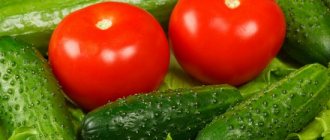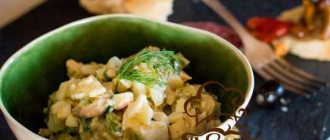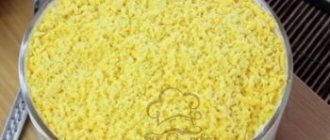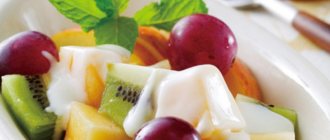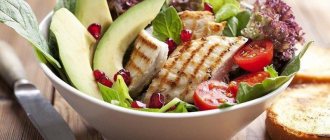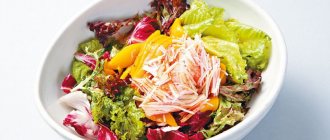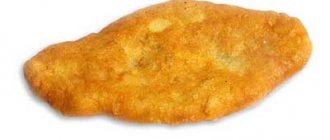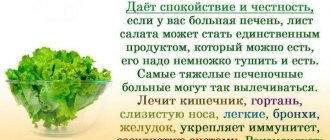Hello, dear readers! Cucumber is a unique vegetable that many people love. It fills the body with energy, without causing any harm to the figure, because... its main component is water. People are accustomed to using it in a variety of forms and even adding it to many dishes. Let's figure out what it actually is, and also consider the calorie content of cucumber in different forms.
The popularity of cucumbers is explained by their unpretentiousness to growing conditions, as well as their fairly low price, which is combined with a pleasant taste and a lot of benefits for humans.
Compound
The benefits of this vegetable are not so surprising if you pay attention to the composition. Cucumber contains a huge number of components important for the human body, including
minerals, vitamins and acids. What exactly does it include:
- Vitamins (C, B, PP, E, A);
- Mineral components (Iron, molybdenum, potassium, calcium, manganese, zinc, fluorine, phosphorus, iodine, magnesium);
- Nicotinic and pantothenic acid;
- Steroidal saponins.
There is not much iron, potassium and some other substances in cucumbers, but enough to provide the minimum required share of this substance for the body.
Cucumbers also contain fiber.
- Proteins – 0.6 g,
- fats – 0.2 g,
- carbohydrates – 3.7 g,
- water – 97%.
These indicators are relevant for 100 g of fresh cucumber of a regular variety.
Harm
It is almost impossible to harm your health by eating cucumbers. Exceptions:
- Acute diseases of the gastrointestinal tract, in particular gastritis and peptic ulcers.
- Nephritis and other kidney diseases during exacerbation.
- Out-of-season vegetables that were grown using large amounts of nitrates.
For the listed pathological health conditions, cucumbers can aggravate the course of the disease if consumed excessively. Rarely, individual intolerance to the product occurs, especially in people allergic to everything green.
Pickled and pickled cucumbers are not recommended for consumption by people with low blood pressure, pancreatic dysfunction, atherosclerosis, pyelonephritis and obesity.
Benefits and harms
All vegetables are very good for health, as parents tell their children from an early age. This is true, and cucumber is no exception. The beneficial properties of cucumber can seriously improve your health. How fresh cucumber affects the body:
- Improves metabolism, normalizes the functioning of the stomach and intestines;
- Reduces sugar levels, accelerates the absorption of beneficial minerals;
- Stimulates appetite, resulting in a feeling of satiety;
- Improves memory;
- Protects against diseases such as atherosclerosis;
- Normalizes the functioning of the thyroid gland, liver, cardiac system, has a preventive effect against thyroid diseases, reduces blood pressure;
- Slows down the aging process, reduces the amount of salts deposited, which eliminates the formation of kidney stones;
- Removes toxins, waste, bile, excess cholesterol from the body;
- Has a diuretic effect, relieves swelling, relieves constipation;
- Has analgesic properties;
- Prevents the development of inflammation, treats tuberculosis;
- It is one of the most effective cough remedies;
- Allows you to maintain a healthy oral cavity;
- Participates in the formation of the body, strengthening bones and joints;
- Has a positive effect on diseases of the nervous system;
- Strengthens the immune system, counteracts infectious diseases.
Salted and pickled cucumbers have approximately the same effect on the body. The differences are minimal and relate mainly to contraindications, because Some products used for salting or pickling can be harmful.
Cucumbers can have a negative effect on humans. Only those who are not recommended to use this product can encounter this. Fresh cucumbers have the following contraindications:
- Ulcer (stomach or duodenum);
- Gastritis;
- Enteritis;
- Enterocolitis;
- Colitis;
- Hypertension;
- Atherosclerosis;
- Nephritis;
- Urolithiasis disease.
If we talk about salted and pickled cucumbers, harm can occur in other cases:
- Hepatitis;
- Cholecystitis;
- Kidney problems;
- Damage to tooth enamel;
- Pregnancy.
If you have at least one of the contraindications, consult your doctor. It is possible that limited consumption of some cucumbers will be acceptable for you.
Composition and beneficial properties of cucumber
The vegetable contains:
- Water - from 95 to 98% depending on the variety and freshness of the cucumber.
- Beta carotene.
- Vitamins of groups A, B, as well as C, PP.
- Minerals: potassium, sodium, magnesium, zinc, copper, manganese, iron, folic acid, chromium, iodine, phosphorus and others.
- Large amount of fiber.
The rich composition determines a wide range of beneficial properties:
- Cleansing the intestines and kidneys of toxins, toxic substances and heavy metals.
- Supplying the body with water.
- Acceleration of metabolism.
- Improvement of digestive processes, beneficial effect on the microflora of the intestines and stomach.
- Improvement of skin condition due to internal hydration and cleansing of the intestines.
- Improving the functioning of the thyroid gland and the endocrine system as a whole.
- Preventive effects on the cardiovascular system and minimizing the risk of plaque formation in blood vessels, increasing their elasticity and strength.
Calorie content
Cucumbers are especially low in calories. Even if you add other ingredients to cucumbers, such as salt or tomatoes, the amount of calories will remain small. The calorie table shows that even dishes where cucumber is one of the main components have dietary indicators for kcal. Let's look at the main options for using cucumbers.
Fresh
Most often, cucumbers are consumed fresh. They are ideal for dieting because their nutritional value is ideal for weight loss. They can be consumed on fasting days to get a minimum of calories with at least some filling in the stomach. The calorie content of fresh cucumbers is only 15 kcal per 100 grams. They contain the most carbohydrates - 3.2 g, protein is present in a small amount - 0.6 g, and there is almost no fat - 0.2 g. If you eat them without peel, the number of calories will be reduced to 12, and carbohydrates - to 2 ,2. You can sprinkle the cucumber with salt. Given the extremely small amount of salt, pickled cucumber is unlikely to become noticeably higher in calories.
Salty
Many people love pickled cucumbers. They stand out from fresh ones not only in taste, but also in their enhanced positive effect on the digestive organs and circulatory system. The reason for this is the presence of beneficial bacteria that destroy harmful microbes that negatively affect the intestines, as well as the production of lactic acid, which affects the circulatory system. The calorie content of pickled cucumbers is only 11 kcal, with 0.3 g of protein, 2.6 g of carbohydrates, and 0.2 g of fat.
Lightly salted
In lightly salted cucumbers, minerals are present in slightly larger quantities. Moreover, in addition to the cucumbers themselves, the brine in which they are stored also has beneficial properties. It contains particles of magnesium and potassium. This is why it is so effective for hangovers. And they differ from pickled cucumbers only in the “aging” period. The nutritional value of such cucumbers is as follows: the calorie content of lightly salted cucumbers is 12 kcal per hundred grams, carbohydrates - 2.6 g, proteins - 0.6 g, fats - 0.2 g.
Pickled
Pickled cucumbers are not only very tasty, but also pleasantly crunchy, which attracts special attention. They awaken the appetite, while simultaneously improving the functioning of the stomach. They help with constipation better than anyone else. However, the concentration of nutrients in them is lower. How many calories? Their quantity will be about 16 units, and BZHU - 0.4/0.2/2.5 g, respectively.
Salad
A very popular dish is cucumber salad. The second ingredient is tomato. Various greens are also added to it (for example, dill and green onions). It turns out to be very tasty and nutritious, and at the same time it is even more healthy thanks to the addition of new components that are no less useful than the cucumbers themselves.
The calorie content of cucumber and tomato salads depends on whether you add butter, mayonnaise or sour cream. If we consider the option with sour cream, then a salad of cucumbers and tomatoes will have a calorie content of approximately 30 kcal per 100 g. If you replace sour cream with a fattier one (from 10 to 20%), the calorie content will increase by 10 units; if you add oil, the number of kcal will increase by about 20 , and when adding mayonnaise - by 50 or even more. Therefore, the latter option should not be used during a diet.
Also, in addition to cucumbers and tomatoes, cabbage is often added to the salad. There are practically no changes in nutritional value, but with cabbage new vitamins appear, which makes the dish much healthier. When adding cabbage to a cucumber salad in addition to tomatoes, the calorie content will increase by about 5 units, but this is true for regular cabbage. If you add cauliflower, Peking or sea cabbage, the indicators will be either less or more, depending on the type of cabbage.
Weight loss
Can cucumbers be used for weight loss? Of course yes. A diet prepared with the addition of this vegetable allows you not only to normalize nutrition, but also to lose excess weight, thanks to the improved functioning of the gastrointestinal tract, combined with the saturation of the body with useful substances. For those who want to lose weight quickly, there are special diets, which are fasting days when you are allowed to eat only a few cucumbers. All this is very effective if you control yourself and follow the instructions for the diet.
Losing weight with pickles will be quite difficult, despite their low calorie content. The reason for this is the presence of salts, which slow down metabolism and retain water. But just for proper nutrition, they are quite suitable.
Let's sum it up
Cucumber is a very healthy vegetable that should be consumed at least from time to time. The beneficial substances present in it are very important for the body, so you should not refuse to buy or grow this vegetable.
Recipe Fresh cucumber salad. Calorie, chemical composition and nutritional value.
Nutritional value and chemical composition of “Fresh cucumber salad”.
The table shows the nutritional content (calories, proteins, fats, carbohydrates, vitamins and minerals) per 100 grams of edible portion.
| Nutrient | Quantity | Norm** | % of the norm in 100 g | % of the norm in 100 kcal | 100% normal |
| Calorie content | 23.5 kcal | 1684 kcal | 1.4% | 6% | 7166 g |
| Squirrels | 2.6 g | 76 g | 3.4% | 14.5% | 2923 g |
| Fats | 0.2 g | 56 g | 0.4% | 1.7% | 28000 g |
| Carbohydrates | 2.9 g | 219 g | 1.3% | 5.5% | 7552 g |
| Organic acids | 0.1 g | ~ | |||
| Alimentary fiber | 0.9 g | 20 g | 4.5% | 19.1% | 2222 g |
| Water | 92 g | 2273 g | 4% | 17% | 2471 g |
| Ash | 1.319 g | ~ | |||
| Vitamins | |||||
| Vitamin A, RE | 7.8 mcg | 900 mcg | 0.9% | 3.8% | 11538 g |
| beta carotene | 0.046 mg | 5 mg | 0.9% | 3.8% | 10870 g |
| Vitamin B1, thiamine | 0.029 mg | 1.5 mg | 1.9% | 8.1% | 5172 g |
| Vitamin B2, riboflavin | 0.084 mg | 1.8 mg | 4.7% | 20% | 2143 g |
| Vitamin B4, choline | 7.69 mg | 500 mg | 1.5% | 6.4% | 6502 g |
| Vitamin B5, pantothenic | 0.273 mg | 5 mg | 5.5% | 23.4% | 1832 |
| Vitamin B6, pyridoxine | 0.047 mg | 2 mg | 2.4% | 10.2% | 4255 g |
| Vitamin B9, folates | 4.733 mcg | 400 mcg | 1.2% | 5.1% | 8451 g |
| Vitamin B12, cobalamin | 0.143 mcg | 3 mcg | 4.8% | 20.4% | 2098 g |
| Vitamin C, ascorbic acid | 4.2 mg | 90 mg | 4.7% | 20% | 2143 g |
| Vitamin E, alpha tocopherol, TE | 0.086 mg | 15 mg | 0.6% | 2.6% | 17442 g |
| Vitamin H, biotin | 0.721 mcg | 50 mcg | 1.4% | 6% | 6935 g |
| Vitamin K, phylloquinone | 12.5 mcg | 120 mcg | 10.4% | 44.3% | 960 g |
| Vitamin RR, NE | 0.2878 mg | 20 mg | 1.4% | 6% | 6949 g |
| Niacin | 0.16 mg | ~ | |||
| Betaine | 0.153 mg | ~ | |||
| Macronutrients | |||||
| Potassium, K | 141.29 mg | 2500 mg | 5.7% | 24.3% | 1769 |
| Calcium, Ca | 42.54 mg | 1000 mg | 4.3% | 18.3% | 2351 g |
| Silicon, Si | 40.649 mg | 30 mg | 135.5% | 576.6% | 74 g |
| Magnesium, Mg | 13.49 mg | 400 mg | 3.4% | 14.5% | 2965 g |
| Sodium, Na | 308.63 mg | 1300 mg | 23.7% | 100.9% | 421 g |
| Sera, S | 8.82 mg | 1000 mg | 0.9% | 3.8% | 11338 g |
| Phosphorus, P | 60.6 mg | 800 mg | 7.6% | 32.3% | 1320 g |
| Chlorine, Cl | 475.69 mg | 2300 mg | 20.7% | 88.1% | 484 g |
| Microelements | |||||
| Aluminium, Al | 339.7 mcg | ~ | |||
| Bor, B | 8.8 mcg | ~ | |||
| Iron, Fe | 0.524 mg | 18 mg | 2.9% | 12.3% | 3435 g |
| Yod, I | 2.4 mcg | 150 mcg | 1.6% | 6.8% | 6250 g |
| Cobalt, Co | 1.069 mcg | 10 mcg | 10.7% | 45.5% | 935 g |
| Manganese, Mn | 0.1498 mg | 2 mg | 7.5% | 31.9% | 1335 g |
| Copper, Cu | 84.89 mcg | 1000 mcg | 8.5% | 36.2% | 1178 g |
| Molybdenum, Mo | 1.603 mcg | 70 mcg | 2.3% | 9.8% | 4367 g |
| Nickel, Ni | 0.122 mcg | ~ | |||
| Rubidium, Rb | 18.2 mcg | ~ | |||
| Selenium, Se | 2.1 mcg | 55 mcg | 3.8% | 16.2% | 2619 g |
| Fluorine, F | 14.18 mcg | 4000 mcg | 0.4% | 1.7% | 28209 g |
| Chromium, Cr | 4.66 mcg | 50 mcg | 9.3% | 39.6% | 1073 g |
| Zinc, Zn | 0.3004 mg | 12 mg | 2.5% | 10.6% | 3995 g |
| Digestible carbohydrates | |||||
| Starch and dextrins | 0.08 g | ~ | |||
| Mono- and disaccharides (sugars) | 2.8 g | max 100 g | |||
| Galactose | 0.134 g | ~ | |||
| Glucose (dextrose) | 1.042 g | ~ | |||
| Lactose | 0.485 g | ~ | |||
| Sucrose | 0.324 g | ~ | |||
| Fructose | 0.885 g | ~ | |||
| Essential amino acids | 0.128 g | ~ | |||
| Arginine* | 0.04 g | ~ | |||
| Valin | 0.022 g | ~ | |||
| Histidine* | 0.008 g | ~ | |||
| Isoleucine | 0.018 g | ~ | |||
| Leucine | 0.025 g | ~ | |||
| Lysine | 0.022 g | ~ | |||
| Methionine | 0.005 g | ~ | |||
| Methionine + Cysteine | 0.008 g | ~ | |||
| Threonine | 0.018 g | ~ | |||
| Tryptophan | 0.005 g | ~ | |||
| Phenylalanine | 0.015 g | ~ | |||
| Phenylalanine+Tyrosine | 0.033 g | ~ | |||
| Nonessential amino acids | 0.311 g | ~ | |||
| Alanin | 0.022 g | ~ | |||
| Aspartic acid | 0.043 g | ~ | |||
| Glycine | 0.023 g | ~ | |||
| Glutamic acid | 0.115 g | ~ | |||
| Proline | 0.014 g | ~ | |||
| Serin | 0.022 g | ~ | |||
| Tyrosine | 0.017 g | ~ | |||
| Cysteine | 0.006 g | ~ | |||
| Sterols (sterols) | |||||
| Cholesterol | 0.95 mg | max 300 mg | |||
| Fatty acid | |||||
| Trans fats | 0.001 g | max 1.9 g | |||
| monounsaturated trans fats | 0.001 g | ~ | |||
| Saturated fatty acids | |||||
| Saturated fatty acids | 0.1 g | max 18.7 g | |||
| 6:0 Kapronovaya | 0.001 g | ~ | |||
| 8:0 Caprylic | 0.001 g | ~ | |||
| 10:0 Kaprinovaya | 0.002 g | ~ | |||
| 12:0 Lauric | 0.001 g | ~ | |||
| 14:0 Miristinovaya | 0.003 g | ~ | |||
| 15:0 Pentadecane | 0.001 g | ~ | |||
| 16:0 Palmitinaya | 0.009 g | ~ | |||
| 17:0 Margarine | 0.001 g | ~ | |||
| 18:0 Stearic | 0.004 g | ~ | |||
| Monounsaturated fatty acids | 0.01 g | min 16.8 g | 0.1% | 0.4% | |
| 18:1 Oleic (omega-9) | 0.009 g | ~ | |||
| 18:1 cis | 0.008 g | ~ | |||
| 18:1 trans | 0.001 g | ~ | |||
| Polyunsaturated fatty acids | 0.002 g | from 11.2 to 20.6 g | |||
| 18:2 Linolevaya | 0.002 g | ~ | |||
| 18:2 Omega-6, cis, cis | 0.002 g | ~ |
The energy value of fresh cucumber salad is 23.5 kcal.
Primary Source: Created in the application by the user. Read more.
** This table shows the average levels of vitamins and minerals for an adult. If you want to know the norms taking into account your gender, age and other factors, then use the “My Healthy Diet” application.
Cucumber diet for weight loss
The essence of the cucumber diet is to eat the vegetable at every meal without using spices and oils, as well as including it in one of the snacks. The diet should consist of:
- Lean meats.
- All types of fish.
- Eggs.
- Fermented milk products.
- Legumes, lentils, chickpeas, peas.
- Except cucumber - all vegetables with negative calories.
- No sweet fruits and berries.
Rye bread or diet bread is allowed in small quantities in the first half of the day.
Confectionery, sausages and products made from white flour, and alcohol are strictly excluded.
Sample menu for the day:
Breakfast - omelet of 2 eggs and 100 ml of low-fat milk with herbs, 2 cucumbers.
Snack - salad of cucumber, cheese and green onions.
Lunch - boiled breast, white cabbage and cucumber salad.
Snack - 2 cucumbers.
Dinner - boiled hake fillet, cucumber.
The duration of such a diet can be up to 14 days, daily weight loss is 0.5-0.8 kg.
Reviews
Dear readers, your opinion is very important to us - therefore, we will be happy to provide feedback on the calorie content of cucumbers in the comments, this will also be useful to other users of the site.
Katya : The cucumber diet has many advantages and only one disadvantage - it makes you hungry. But if you follow it during the cucumber season, when it’s hot and your appetite decreases, you can achieve excellent results in a short time.
Mila : My favorite vegetable - eat as much as you want with meat, fish, beans - it goes with everything and no harm to your figure! I also always make cucumber masks - the effect is amazing.
